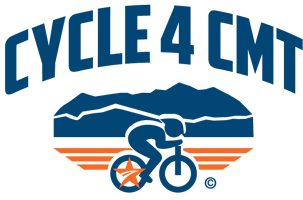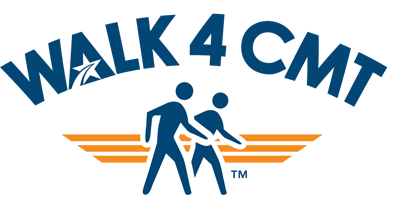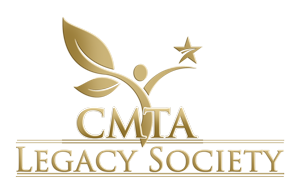There currently are no available treatments that act to slow the progression of Charcot-Marie-Tooth disease. There are promising CMT research studies that indicate that this may change in the near future. However, there are medications that doctors may prescribe to you to help treat the symptoms of CMT rather than the disease itself. This inherited neurological disorder affects your peripheral nerves, leading to muscle weakness and sensory issues. Medications can play a crucial role in helping you cope with the symptoms and improve your quality of life.
On this page, you will find information about a variety of medication types that a person with CMT may be prescribed for managing symptoms or comorbid diseases. To skip to a specific section on the page, click on one of the jump links below.
- Pain Management
- Neurotoxic Medications
- Vaccinations
- Antibiotics
- Antidepressant Medications
- Frequently Asked Questions About Other Medications
Pain Management for CMT Disease
CMT often causes chronic, neuropathic pain that makes day-to-day life with Charcot-Marie-Tooth disease more difficult. If neuropathy is causing pain that diminishes quality of life, then this symptom should be treated. Learn more about neuropathic pain, what it is, and how it is treated in CMT disease patients on our Neuropathic Pain Management page.
Are there any medications that CMT patients should NOT take?
Neurotoxic Medications
Some medications have toxic side-effects, those with CMT are generally at no greater risk of side-effects than general public. Only a very small number of medications pose a greater risk to people living with CMT. You can learn about these in CMTA’s funded review of neurotoxic medications for people living with CMT. In short, apart from the two anti-cancer drugs identified (vincristine and paclitaxel) there is no evidence that any other drug included in the review poses a greater risk to those with CMT.
Vaccinations and CMT
Are any vaccinations contraindicated for CMT patients?
There are no contraindications for any vaccine.
Flu Shot
There is the standard vaccine, the nasal version (less effective) and the senior version or “high dose vaccine” The high dose vaccine contains 4 times the amount of antigen as a regular flu shot. It is associated with a stronger immune response following vaccination (higher antibody production). The high dose vaccines may result in more of the mild side effects that can occur with standard-dose seasonal shots. Mild side effects can include pain, redness or swelling at the injection site, headache, muscle ache and malaise.
Here is a link to understand the senior vaccine for flu shot: https://www.cdc.gov/flu/highrisk/65over.htm
In the end, everyone should consult with his/her doctor to decide upon which version of the shot to get.
Coronavirus Vaccine (COVID-19)
For information about the Coronavirus vaccine and CMT, visit our webpage: https://www.cmtausa.org/coronavirus-covid-19-and-cmt/
Are there any contraindications to getting the meningococcal vaccine and the flu vaccine at the same time?
The story of vaccinations and neuropathy is a long and controversial one. In the past, some vaccinations (like swine flu vaccine in the 1970s) prompted concerns about certain vaccines triggering an immune-mediated abrupt neuropathy (Guillain-Barré syndrome) in otherwise normal people. Most associations have not been proved after larger scrutiny. Neither the meningococcal or current flu vaccines are specifically associated with neuropathy but the flu vaccine is different every year. While there is no evidence that vaccines affect the CMT genes directly, the issue has not been studied. When an immune attack on nerves is triggered in a CMT patient, any nerve damage may add to the underlying neuropathy. The process, in general, lasts for one to four weeks and then improves depending on the severity of the process. Guillain-Barré syndrome (GBS) can occur in CMT patients, but there is no consensus on whether the incidence is higher than for the general public. If it does occur, CMT makes the diagnosis more difficult but treatment is the same. It is suspected but unknown whether a mild version of the process commonly occurs because these patients tend not to go to a doctor; however, a mild form of GBS in a patient with underlying neuropathy from CMT could lead to the symptoms presented. Nine days after vaccination is a reasonable time frame but we have no means to prove the association.
Hepatitis B Vaccine
Some CMT patients have an autoimmune polyneuropathy in addition to their CMT. For those patients, we must be concerned about vaccinations. Most CMT patients will not have a reaction other than the kind that might be expected in anyone. If the CMT patient has a common reaction to an immunization, the problem will be transitory. However, if the CMT patient has chronic inflammatory neuropathy as well as CMT, the patient could be left with a loss of motor and sensory function. There should not be anything neurotoxic in hepatitis B vaccine; however, there is a protein in some flu vaccines that might produce abnormal response. Unless the patient is hypersensitive or has an autoimmune problem, they should be able to tolerate the immunization. For the person who works in a hospital setting, hepatitis might be a real threat. Hepatitis is a far more serious condition than a reaction to the immunization for hepatitis.
Shingles Vaccine
While Zostavax, intended for adults over 60, has been approved by the FDA, there is still somewhat limited experience with it. However, results published in the New England Journal of Medicine are very promising. The vaccine was studied in about 38,500 adults, half of whom received the vaccine; the subjects were followed for an average of 3 years. Subjects who received the vaccine were half as likely to get shingles (herpes zoster) and much less likely to develop postherpetic neuralgia (PHN), the painful form of neuropathy limited to the region of the shingles. It appears that everyone who developed PHN actually had true shingles, despite the vaccine and not because of a vaccine reaction. There is no evidence that CMT patients would fare differently from others and PHN can be particularly painful for these individuals. There is no mention of whether any CMT patients were included in this large trial.
Whooping cough vaccine
Whooping cough vaccine is part of the dPT or dP routine vaccination. It carries no greater risk than any other routine vaccines. Whooping cough (diphtheria) is trying to make a comeback because of unvaccinated children. Diphtheria infection can cause severe demyelinating neuropathy and is potentially fatal.
Antibiotics and CMT
Prolonged Use
Taking antibiotics for a prolonged period sometimes puts one at different risks than the usual five- to 14-day course prescribed for most infections. Usually this implies that the underlying infection is more severe or more difficult to eliminate. Only a few antibiotics are known to be of higher risk to CMT patients than others. The two used for bacterial infections with the most convincing link to neuropathy are metronidazole (Flagyl) and nitrofurantoin (Macrodantin, Furadantin, Macrobid). Others used for viral infections (HIV agents, wart virus) fungal infections (griseofulvin), and parasitic infections (malaria) are usually considered separately. There are a few others with minor or preventable risk, such as Isoniazid (INH). Most antibiotics in common use are not associated with neuropathy, even with prolonged use.
Nitrofurantoin
Most people don’t have problems with nitrofurantoin unless they take it for an extended period of at least a month or more. Taking the drug at its usual dose for the typical seven to 10 days rarely causes a problem. Nitrofurantoin (Macrodantin) is an antibiotic used for a variety of problems, but more extensively in past decades for UTIs. It is associated with causing and worsening neuropathy, especially if taken on an ongoing basis; however, the nerves that control respiration are not usually involved especially if the nerves to the limbs are not similarly affected. There is surprisingly little information about CMT patients using this drug on a regular basis. The drug, however, is associated with other direct lung (pulmonary) toxicity of differing types.
Anti-depressant medications
Stopping Anti-Depressants
The risk is minimal if the drugs are indicated. Some of these agents have been studied as treatments for neuropathic pain and showed no signs of making patients worse. The major concern about stopping an antidepressant is that you might not be ready to do so. Most doctors recommend that you continue taking an antidepressant for four to six months after you feel better to reduce the risk of your depression returning.
Once you and your doctor decide to stop the medication, the dose should be gradually reduced over a few weeks to avoid the chance of withdrawal symptoms. Some experts recommend tapering the dose down over a period of one week for every month you’ve been on the drug–six to eight weeks if you’ve been on the drug for six to eight months, as a rule of thumb. During this time, you and your doctor should be watching for evidence of withdrawal symptoms or a depression recurrence.
Older antidepressants like tricyclic antidepressants and monoamine oxidase inhibitors have been known to cause discontinuation effects. The most common effects seen in the case of tricyclic antidepressants such as Tofranil and Elavil are upset stomach and nausea, flu-like symptoms, anxiety, low mood, and sleep disturbance. In the case of stopping monoamine oxidase inhibitors, such as Nardil, you may experience disorientation, confusion, mild movement disturbances, and even hallucinations.
It is also becoming increasingly evident that the newer class of antidepressants, called selective serotonin reuptake inhibitors, or SSRIs, such as Paxil and Zoloft, also have discontinuation effects. The most common are dizziness, lightheadedness, weakness, headache, stomach upsets, sleep disturbances, and anxiety. Problems have also been described with some even newer antidepressants, such as Effexor.
Amitriptyline
In 1970, there was a very old and unconvincing report that there may be rare painful reactions to the antidepressant, Amitriptyline. There are other common side effects attributable to predictable blocking of autonomic nerve signals that cause dry eyes and mouth and bladder complaints; increased pain and weakness are not typical side effects. Drowsiness is also common. The drug is still frequently used to treat the symptoms of neuropathy as long as the common side effects are tolerable; there are other similar drugs available with fewer side effects. However, the drug appears to be intolerable to this patient and probably best avoided. We have found no other similar reports of this kind in a review of the North American CMT database registry.
Cymbalta
Cymbalta (duloxetine) is one of the few medications that went through the lengthy process to receive FDA approval for neuropathic pain, specifically for diabetic neuropathy, but is generally used for any type of neuropathy-associated pain. The drug was approved in 2004, so it has quite a while to go before legal generics can be sold in the US. Duloxetine is an anti-depressant and not a benzodiazepine, but the drug has been studied to treat anxiety as well.
Venlafaxine
Venlafaxine (Effexor) is a popular and widely used antidepressant that is also used to treat neuropathic pain, especially well studied in patients with diabetic neuropathy, although the drug has no current specific FDA indication for this use. It has not been associated with worsening CMT neuropathy. The drug does have a variety of side effects and unusual complications that should be considered before use or withdrawal of use. The drug appears to have an increased risk of neuroleptic malignant syndrome and possibly serotonin syndrome, emergent conditions that affect muscle, but this risk is not further increased, to my knowledge, by having CMT.
Anti-fungal drugs
Nystatin
Because of the addition of so many new medicines over recent years, name similarities are inevitable. The statin class of cholesterol drugs inhibits a critical enzyme in cholesterol production. Nystatin is a completely unrelated antibiotic drug that long predates statin cholesterol drugs and is primarily used to treat fungal infections; Nystatin is NOT associated with neuropathy.
Frequently Asked Questions About General Medications
ADHD Medications
Dexmethylpenidate (Focalin), approved in 2001, is chemically similar to Ritalin, a drug familiar to many. This class of medication is not known to affect CMT or cause neuropathy and is not contraindicated in CMT in general. It can decrease appetite and lead to weight loss. It may also enhance the risk of seizures in susceptible individuals.
Alcohol and CMT
Alcohol was removed from the neurotoxic drug list in July 2004. While people with CMT generally suffer no ill effects from the moderate consumption of alcohol, they should be particularly mindful of the fact that alcohol affects balance and coordination and that overconsumption of alcohol is generally not recommended under any circumstances. If you have questions about alcohol and your health, consult your physician.
Anesthesia and CMT
There are no contraindications for anesthesia, including lidocaine injections with epinephrine. The only thing to be aware of and to tell the doctors about is that you will not recover from anesthesia as quickly as a person without CMT, so they need to take their time in moving you. There are concerns for prolonged general anesthesia in the ICU setting for many days to weeks, but there is no evidence of a problem with short-term anesthesia.
Most people with CMT will have no problem with anesthesia. Only those with respiratory involvement (very rare) or vocal cord paralysis (a very rare variant) may have problems with anesthesia above that seen in the general population.
There are no contraindications with dental anesthesia. Nitrous oxide or laughing gas is only neurotoxic for the general public (no higher risk for people with CMT) if the person abuses the drug or has a vitamin B deficiency.
Anticonvulsants
Anticonvulsants (some of which have been noted to have mood-altering effects) such as tiagabine (Gabitril) are notorious for side effects like dizziness and drowsiness. These side effects are also present with conventional antidepressants. CMT patients are, therefore, confronted with a cost-benefit analysis—the feeling of well-being associated with these medications versus the fear of falling down and injuring themselves.
Blood Pressure Medication
We know of no evidence that verapamil and avapro produces worsening of neuropathy either alone or in combination.
Blood Thinners
Many people take the blood thinner warfarin (Coumadin) for a variety of reasons. The drug interferes with blood concentrations of many other drugs and this fact needs to be taken into consideration when dosing, but there are no suspicions that it causes neuropathy or worsens CMT.
Botox and CMT
According to our CMT experts, Botox is not recommended for individuals with CMT but can be used in areas that are not directly affected by CMT (the face, for example). Botulinum toxin (Botox) is complicated for CMT patients. In most instances any weakness produced should be very local to the injection site and temporary. There is some evidence but not a well-accepted belief of mild effects on muscles away from the injection sites. It’s possible that more local weakness than average will be produced in CMT patients, especially if the injections are in the legs. However, the risk is likely very small in general, depending on which muscles are injected. There is no evidence that injections will worsen the overall condition.
The risk for migraine Botox in CMT is minimal. The symptoms described are well known and common side effects. The treating doctor should have mentioned these possibilities. It is unclear if CMT patients are more vulnerable. However, Botox is expected to wear off in 3 months.
Has Botox been used in CMT to release hammertoes, Achilles tendons or anything else? According to Dr. Greg Stilwell, Botox has been used successfully in spastic contractures, as well as hyperhidrosis (sweaty feet). Typically, spastic contractures are NOT seen in CMT, but a podiatrist/orthopedist or physiatrist well versed in CMT could evaluate that individually. The hammertoes seen in CMT are usually as a result of muscle imbalance and structural misalignment. The most successful reports of Botox have indeed been in the Achilles tendon; these are usually cases where someone has had a stroke or other central nervous system insult that results in spastic contracture of the Achilles.
If you are having facial work done, there have been no contraindications with hyaluronic acid.
Bone Health Medications
There is no listed contraindication to the use of alendronate (Fosamax) in patients with CMT. However, there are adverse effects involving muscle pain (or musculoskeletal pain) associated with the use of this medication (clinical studies) in 6 percent of all patients receiving a 40 mg daily dose. This adverse effect usually doesn’t result in discontinuation of the alendronate.
Creatinine
Creatinine is a waste product that is produced by your muscles. It is typically removed through the kidneys. We do not know of any contraindications with creatinine in patients with CMT.
Dermatologic Medicines
There would seem to be no problem with the topical application of Mycolog II cream (Nystatin and Triamcinolone Acetonide cream). I am aware of only one reference to peripheral nervous system toxicity and topical creams/ointments. A 30-year-old African woman sustained weakness in her legs and a burning sensation in her feet for two months following the application of hydroquinone (skin bleaching) cream, which she had been using for four years. Her symptoms dissipated in four months.
Beta Blockers
Provided there is no evidence of muscle damage (high CPK or vascular insufficiency), there is no reason why beta blockers should not be used for hypertension in patients with CMT. The cardiologist should be aware of any EKG changes.
Hormone Therapies, Steroids, and Birth Control Pills
We have not encountered any problems with CMT patients taking hormone therapy of estrogens or progesterone. Nor do we believe that there is any theoretical reason why this should make a neuropathy worse. If there is any deterioration of your CMT, you should be evaluated immediately, but this is not an expected result, and you should consult with your doctor.
There is no known effect on CMT or neuropathy from Arimidex or similar breast cancer hormone treatments. There are some possible beneficial effects of some other hormone blockers, especially progesterone blockers, in animal models of CMT1 and this question is an active line of research, but the effects from Arimidex are likely to be clinically insignificant; the drug has demonstrated benefits in the proper breast cancer setting.
As far as we know, there should not be any neuropathy concerns Tymlos for osteoporosis in a person with CMT. However, there are other unrelated risks that the patient should discuss with the prescribing doctor.
Male and female steroids (hormones) of various types appear to affect a variety of normal nerve and muscle functions. Treatment with onapristone, a progesterone antagonist, has improved the neuropathy of the CMT1A rat, but has not been tested in humans yet. Testosterone (Androderm) has beneficial effects on muscle building, but also has numerous deleterious effects, including those on prostate tissue. The changes described are not surprising following the loss of the hormone treatment, but testosterone has not been adequately examined for safety and efficacy in CMT patients to recommend use for neuropathy. However, it is not something to avoid in a CMT patient, if indicated for another condition. As with any treatment with possible toxicity, the relative risks and benefits need to be weighed. The potential benefit may simply be adding more muscle and not improved nerve function.
Steroids have not shown to be effective in strengthening muscles affected by CMT. Our doctors do not encourage their use for this purpose. To our knowledge, Anavar hasn’t been tested but anabolic steroids are not advised in neuromuscular patients even though they seem like a good idea.
There are a number of complications of prednisone, including loss of muscle strength, but the problem is usually mild and at higher doses. The effects are uncommon and directed directly against muscle and not on the nerve or worsening of CMT. The effect is likely magnified with already weak or inactive muscles. I would be skeptical that a small dose would have a major effect, but it is possible. Decisions about steroid use or dose should be weighed against the expected benefit gained for the arthritis and the severity and type of the arthritis.
Muscle relaxers and CMT
Muscle relaxers like Soma should not affect your nerves or strength, but may cause sedation or sleepiness.
Narcotics (Oral and Intravenous)
Contrary to public opinion, except in the case of over dosage, oral narcotics such as methadone are some of the safer medications in use. We know of no evidence linking their use to worsening or causing neuropathy, abnormal muscle cramps or muscle spasm. Too rapid a withdrawal can cause unpleasant symptoms. Intravenous heroin has very rarely been linked to nerve injury, but almost certainly because of toxic and unintended side products in the injections used by some addicts. Methadone and Vicoden pills have no such concerns.
Over-the-Counter Pain Relief
There are no reported contraindications for persons with peripheral neuropathies taking these over-the-counter drugs: tylenol, aspirin, and Advil.
Quinine & Nocturnal cramps
Please consult with your physician before consuming tonic water for nocturnal cramps! The FDA has banned the use of quinine for nocturnal leg cramps because of its serious side effects. For most people, the low doses of quinine contained in tonic water are not enough to trigger serious side effects. So, most people can use tonic water occasionally and in moderation as a remedy for leg nocturnal cramps. However, for an unlucky few, even the small amount of quinine in tonic water can cause thrombocytopenia. Thrombocytopenia is a drop in the blood’s platelet count that can lead to internal and external bleeding as well as a related condition that can cause permanent kidney damage.
Sleep Aids
There is no known link between the sleep aid zolpidem (Ambien) and neuropathy. The drug can cause sleepiness or sedation, which is its primary useful effect and can make some motor tasks more difficult for CMT patients. Anyone who notices a significant decline in strength after taking Ambien should consult his or her physician.
Statins and CMT
The statin drugs are safe for most patients with CMT. There is no evidence that one statin is any better or worse as a risk factor for neuropathy. The muscle weakness that they can cause is not an issue for most of the people who take them. The effect with all of the statins is rare and we are not advising patients to avoid statins, only to be aware of the association. Statins are clearly superior to the older treatments for hyperlipidemia (elevated cholesterol levels), so each treating physician needs to weigh the clear benefits of the drugs against this small risk in CMT patients. The CMT doctors all agree that it is more important to control high cholesterol than to worry about possible muscle weakness. Mildly increased CK (creatine kinase) values are not a primary reason to withhold a statin drug, but muscle symptoms and CK values should be checked while on the drug. The risk of worsening the neuropathy appears to be very small, but incompletely known, while the benefit of the drugs is well established. Elevated CK levels, in general, are not common with CMT.
Tattoos
Tattoos shouldn’t make CMT worse and unless there are significant sensory deficits in the region, tattoos in people with CMT should not be more risky.
Vision Corrective Surgery
To our knowledge, people with CMT are at no additional risk in having Lasik eye surgery or other corrective procedures.





